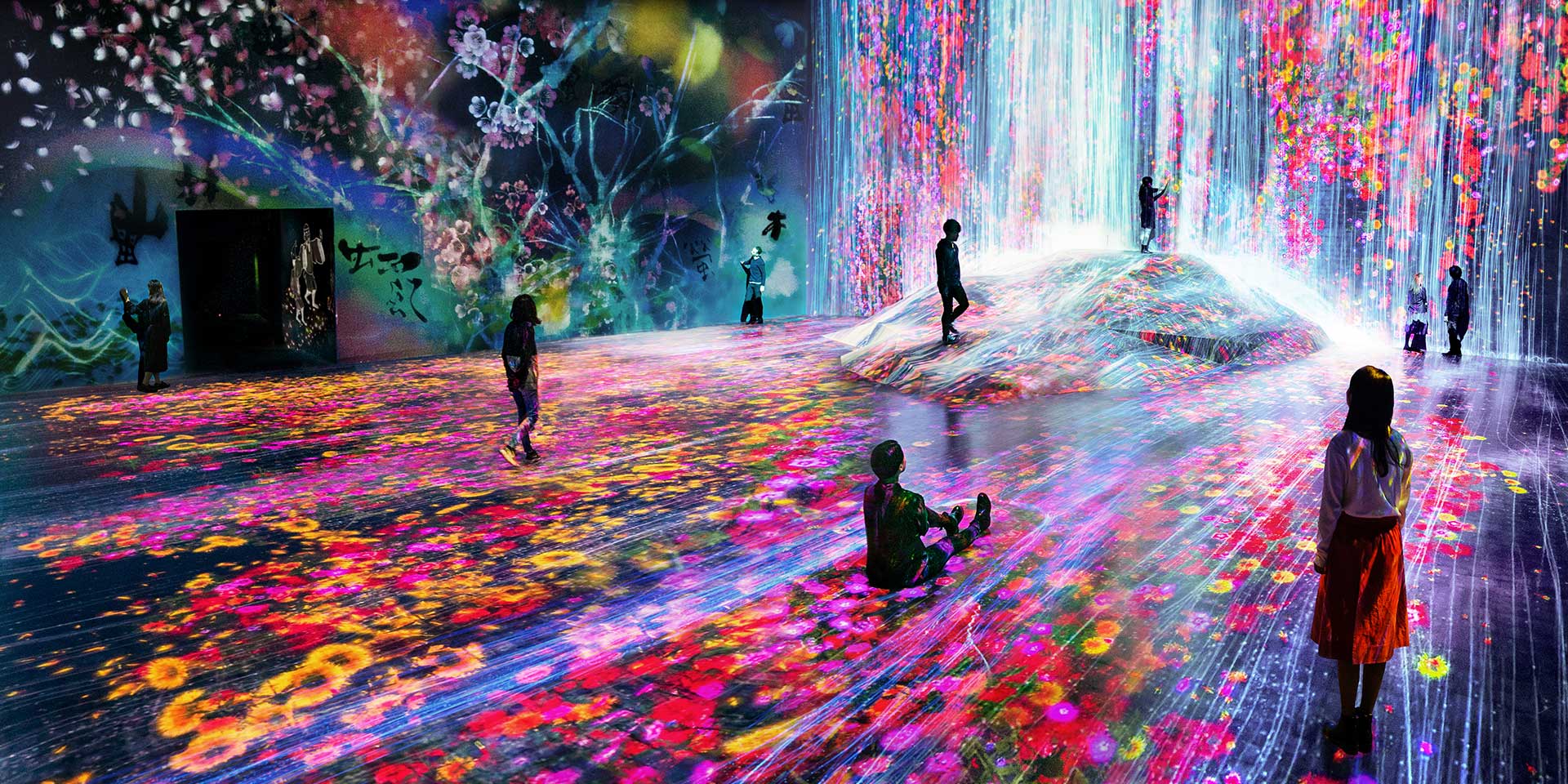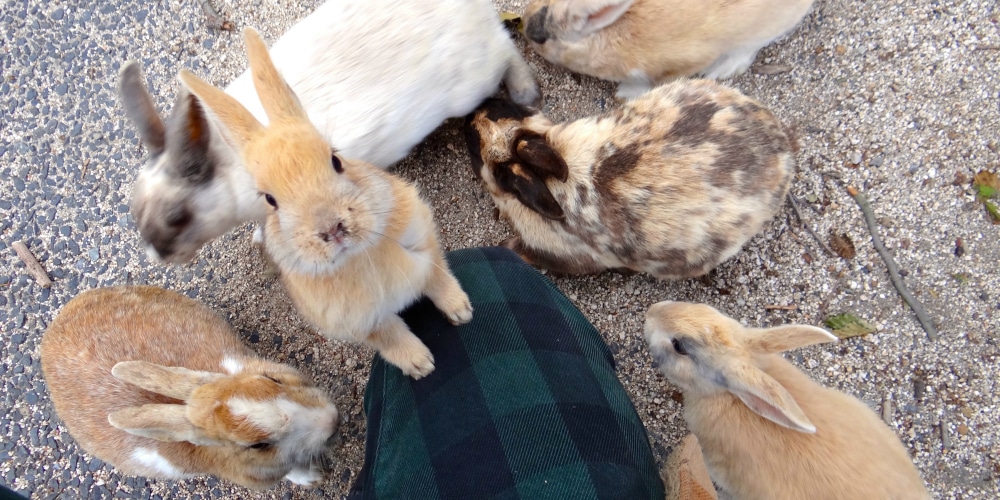
When you think of Japan several things might spring to mind: Karaoke. Sushi. Geishas. Bullet trains. What you might not realize is that it’s also one of the best countries in the world to get up close and personal with some of your favorite furry friends.
From cat cafes in Tokyo to Snow Monkey Park in Nagoya, free roaming deer in Nara, and Rabbit Island near Hiroshima, Japan is an animal lover’s paradise. And with the Japan Rail Pass, available exclusively to visitors, you can explore them all pretty easily.
RABBIT RUN
The small island of Okunoshima, in the Inland Sea of Japan, has a horrific past, serving as the location for a poison gas factory in the late 1920s, and a secret test site for chemical warfare during World War II. Now, it’s the home of hundreds of rabbits—and there’s nothing scary about them.
Said to be the descendants of the poor test bunnies from WWII (the Japanese government denies those claims), the rabbits are now free from predators of any kind. That’s turned into the most curious creatures unafraid of anyone that comes to visit them.
A mere crinkle of a bag of rabbit food (sold at the ferry station for 100Yen) will create a bunny stampede heading in your direction. They will hop in your lap, climb on your arms, or totally cover you in bunny love if you let them.
SEE ALSO: How Jack Harries Spent 24 Hours in Tokyo


Okunoshima’s rabbits are fairly harmless but they do have poor eye sight so it’s recommended to feed them on the ground or let them nibble out of a gloved hand so you don’t get any bites.
You can bring your own lettuce or carrots if you’d like but we found the rabbit food to be best for sharing and quite reasonably priced.

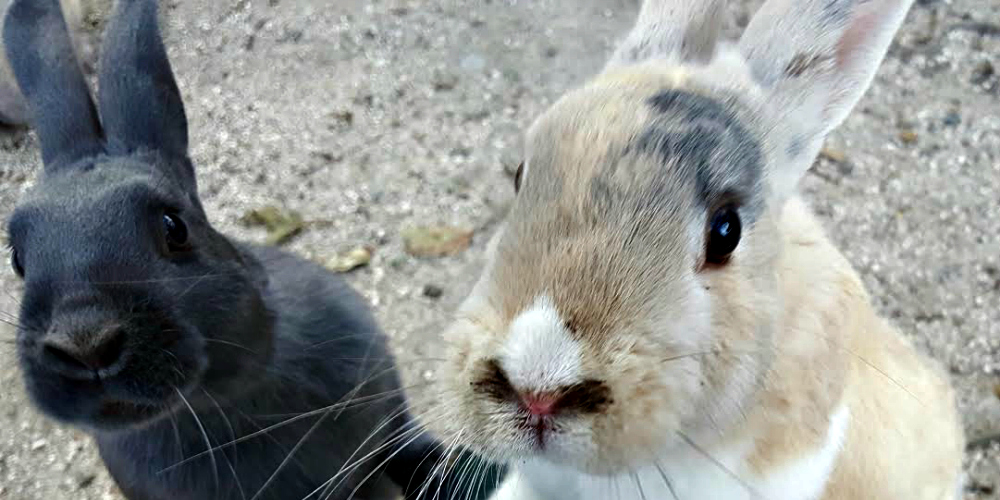
Check out this hilarious video of Rabbit Island below.
Most easily accessed from Hiroshima Station (but still quite a jaunt with several local trains and a ferry to get you there), Okunoshima has a hotel on site for anyone looking to spend a little more time with the rabbits—a six-hole golf course is also on the island. The only remaining sign of Okunoshima’s dark past is a Poison Gas Museum.
Given the various modes of transportation needed to reach the island, Okunoshima’s the more difficult animal destinations in Japan to get to, but with a portion of the commute traveling along the country’s picturesque coastline and the bunnies being so friendly, the excursion was more than worth the trek.
CAT FANCY
Japan’s love of cats is undeniable and it shows by the sheer number of cat cafes across the country. It even celebrates “Cat Day,” on Feb. 22.
For cat lovers, it’s easy to start your animal adventures in Tokyo since it offers up dozens of options. You can’t go wrong choosing any of them, but our current favorite is the whimsical Temari no Ouchi Cat Cafe.
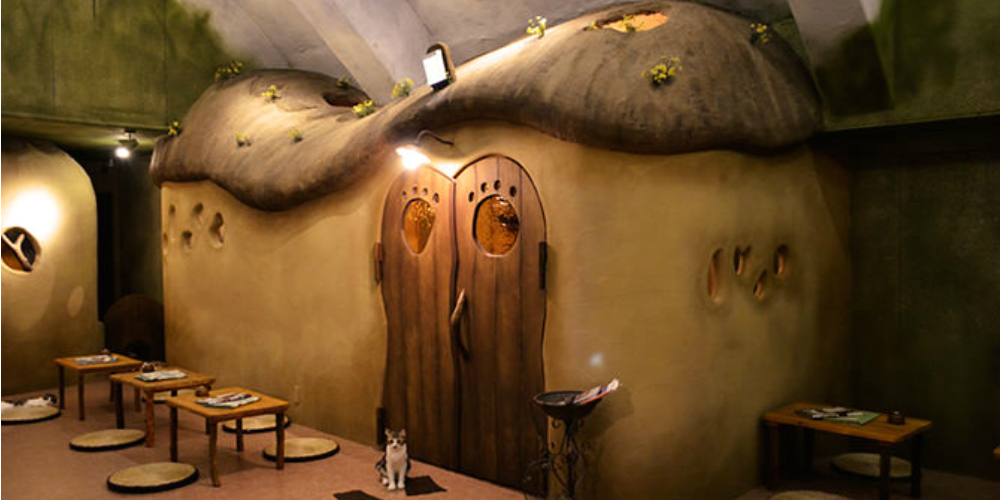
Located on the third floor of an unsuspecting building, just off a main shopping street in the Kichijōji neighborhood of Musashino in Tokyo, this fairytale-like cat cafe boasts a household of 17 or so cats with playground areas for them that are seemingly ripped from the pages of Disney.
The assortment of kitties roam freely as you sit and enjoy some tea or a “cat-accino” while petting and playing with your favorite furball. The cafe’s open from 10 a.m. until 9 p.m., with an entrance fee running approximately $11.
MONKEY SEE, MONKEY DO
Nagano, a 1.5-hour bullet train ride from Tokyo, hosted the 1998 Winter Olympics, but now attracts visitors each year to see its Japanese macaques (often referred to as snow monkeys or “Saru”).
At Jigokudani Monkey Park, hundreds of monkeys descend from the steep cliffs and forest to sit in the warm waters of the “onsen,” or hot springs, much like their human counterparts in this area. This ritual, plus the amazing slopes nearby, make winter the prime time to visit the park.

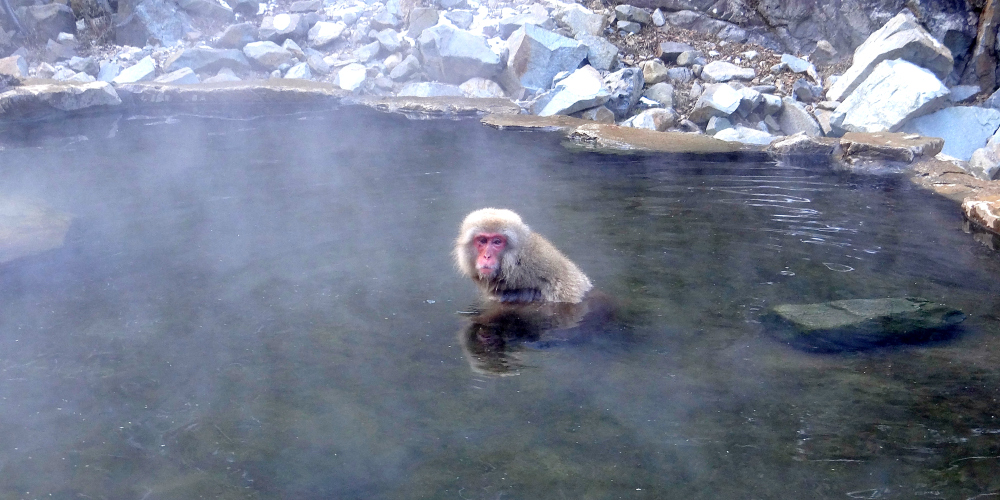
However, since the monkeys are fed by park attendants, they can be found in the area of the hot springs all the year round making a visit at any season a good chance for visitors to observe the macaques. The park allows you to be right in the thick of things with the monkeys themselves with no barriers so interactions can be amazing and sometimes a little intimidating.


The monkeys are highly entertaining but safety guidelines, like no feeding and no direct eye contact, are provided at the park’s entrance and on signs posted in the park.
A 20-minute uphill walk, plus a nominal fee, is required and the park’s hours vary daily. The monkeys aren’t the only ones that get to enjoy the hot springs: There are plenty of human-only springs in Nagano for you to soak in and see what all the fuss is about.
OH, DEER
Four hours from Nagano, via several trains—a window seat is a must, with beautiful snow-capped mountains and unique terrain to view during the journey—Nara Deer Park is home to over 1,200 free-roaming sika deer.
Local mythology says that a deity named Takemikazuchi arrived at the old capital of Japan on a white deer to act as its protector. This lead to the wild deer here now being considered national treasures and have laws that protect them as such. You can find them in the woods, by the temples, or wherever there’s food as these deer do as they please.

“Deer crackers” are sold at shops sporadically throughout the park, but, be forewarned. Once you feed one, any in eyesight are sure to come looking for a handout as well. We found the deer to be mostly friendly and open to gentle petting but could definitely get a little rough when food is involved. Or personal belongings. Our map of the park quickly became a snack once it was unfolded.
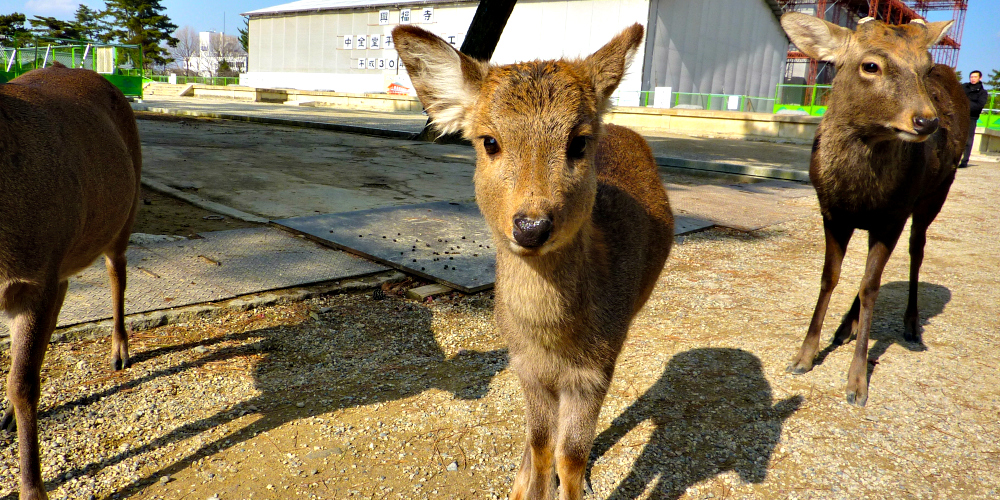
The many shrines and temples in the area give a great backdrop for these lovely creatures and, like the monkeys, the amazement of being able to observe and interact up-close-and-personal is truly worth the trip.
For the journey, all seats on trains can be pre-reserved at any JR Shinkansen counter at no additional cost. Traveling through such must-see cities as Osaka and Kyoto, Japan’s third- and sixth-most populated, respectively, can also help break up the trek.
Nara Park is also home to the Nara National Museum and the largest wooden building in the world, Todai-ji, which houses a 50-foot tall statue of Buddha. The park itself is within walking distance of the Nara JR train stop and charges a small fee for park upkeep.
OTHER WILD ENCOUNTERS
For those looking for more furry friends, consider the wild horses of Cape Shiriya, in northern Japan; Miyagi Zao Fox Park, in Shiroishi; or 1 of 11 cat islands found in the country — Tashirojima being the most famous where cats outnumber their citizens almost 6-to-1.





